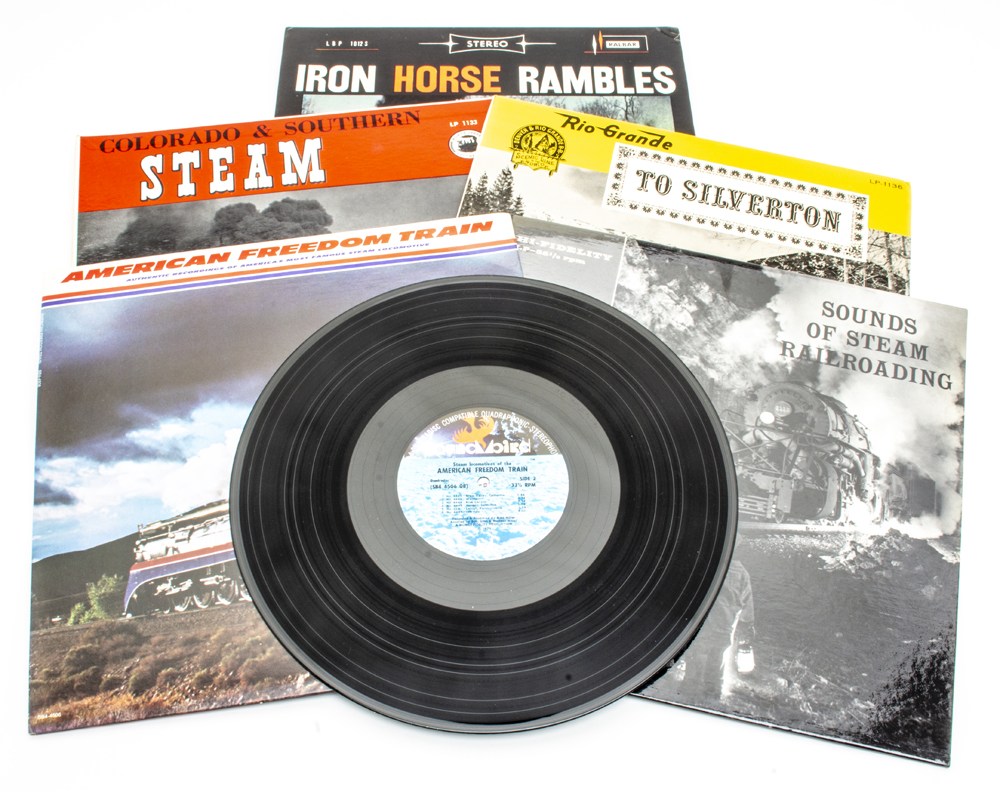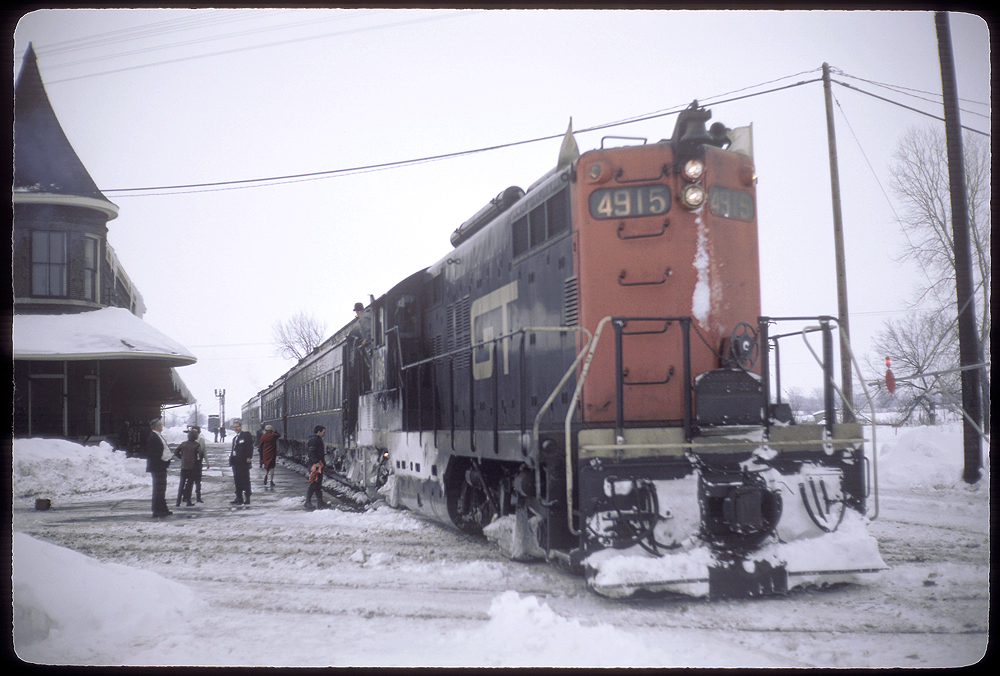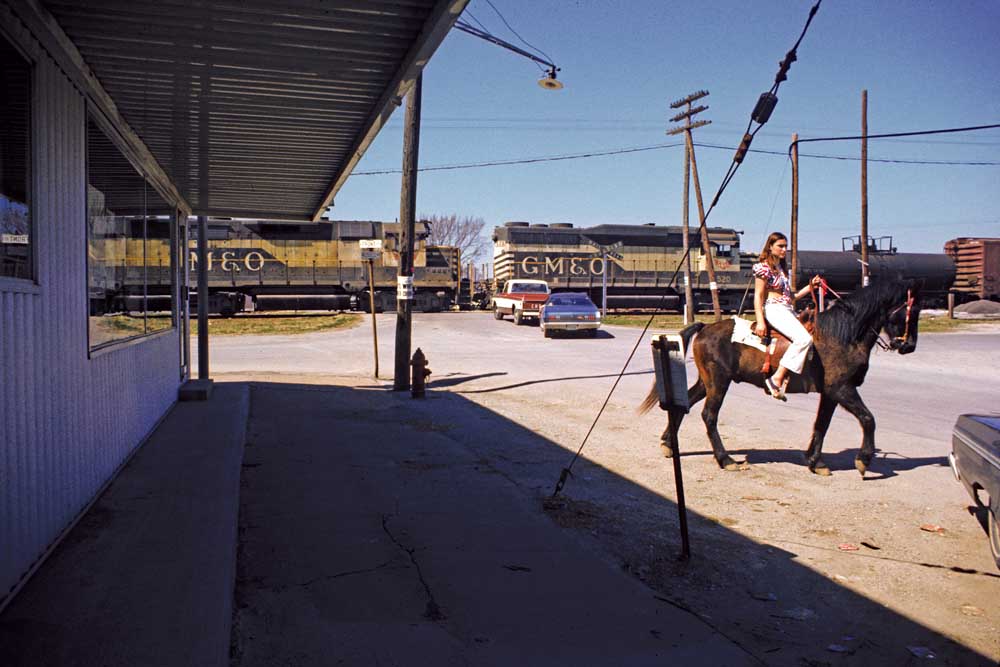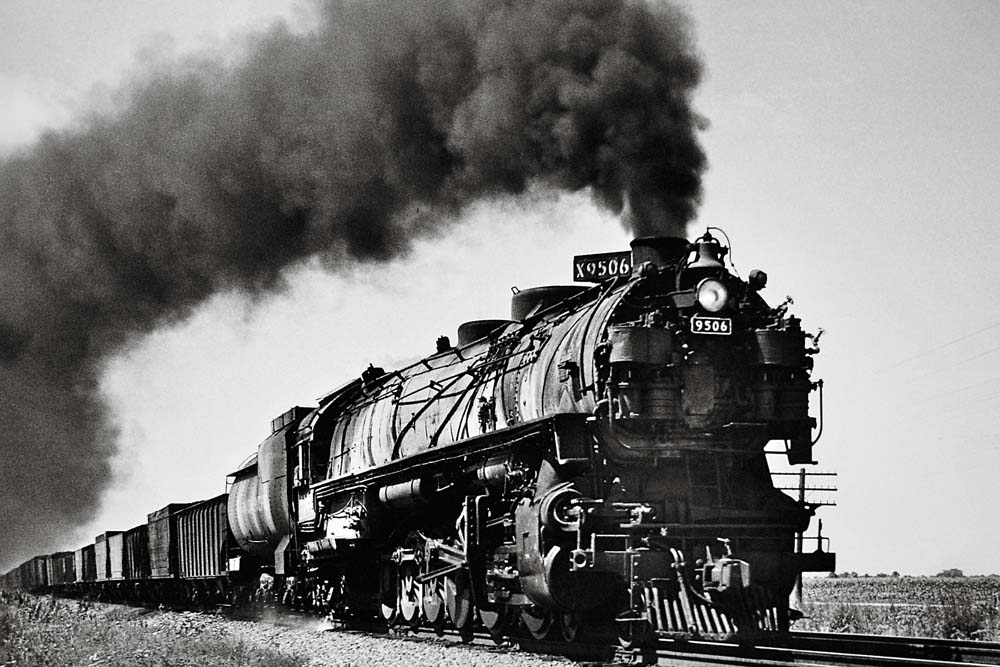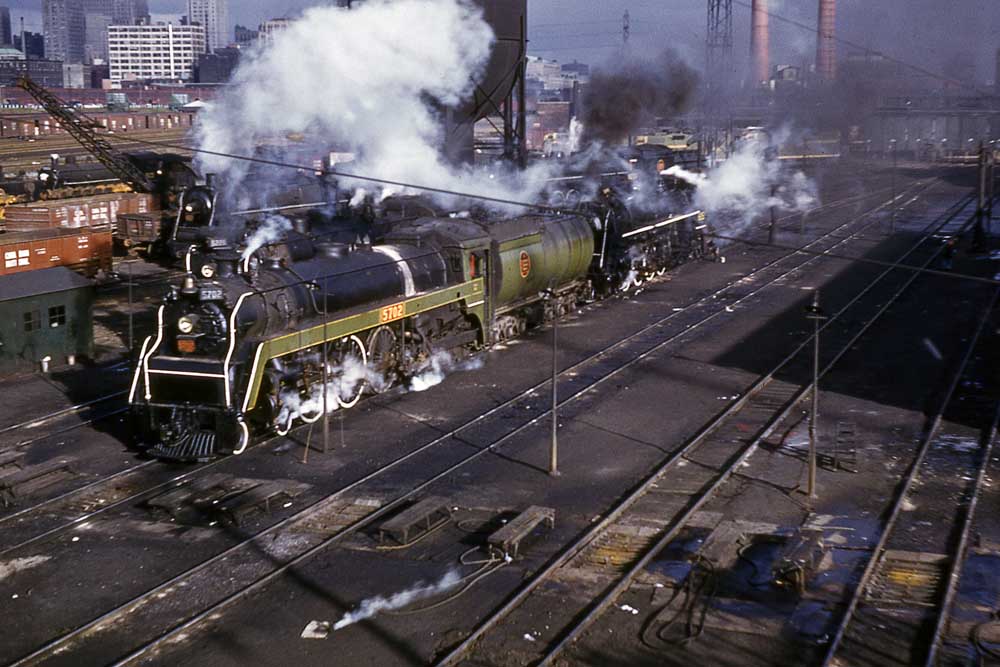
Thanksgiving in Toronto was about to begin.
Shortly before noon, two teenagers swung down from the Pacific’s cab. Just as they hit the station platform, two peeps came from the cab communication whistle. The fireman turned around, waving a good-bye, and Canadian Pacific train 326 was in motion — 11 minutes away from its final destination at Toronto Union Station.
Three hours earlier we had been waiting at Black Rock in Buffalo, N.Y., for our train. It was Thanksgiving Day 1958, and a railfan friend and I had planned a day trip to Toronto to catch some Canadian National and Canadian Pacific steam, and, we hoped, some of Toronto’s Peter Witt streetcars that were still in service. We had picked Thanksgiving because our schools would be closed for the holiday, yet it was a normal workday in Canada, where Thanksgiving is observed in October.
My dad had helped with the trip. He worked for the Immigration & Naturalization Service in Buffalo and was a regular U.S. Immigration Inspector on the Toronto, Hamilton & Buffalo trains between Hamilton, Ontario, and Buffalo. He knew most of the TH&B crews, and it was a simple matter for him to call one of his conductor friends and arrange a free ride for us to Hamilton. There, however, the train would become a CP operation, so we each bought a Hamilton–Toronto ticket from the agent at Black Rock, the last U.S. station before TH&B trains crossed the Niagara River to Fort Erie, Ontario. TH&B 377 originated at NYC’s Buffalo Central Terminal and was due at Black Rock at 8:50 a.m.
The train pulled in, hauled by a couple of NYC Alco RS3 diesels. After it stopped, my dad—who had given us a lift to the station—located his conductor friend. After introductions, we boarded and grabbed seats in a coach. The conductor found us while we were in the middle of the International Railway Bridge and said, “When you finish passing through Canadian Immigration, bring your stuff, come forward, and meet me on the station platform.” We did just that. He saw us and said, “I want you to meet somebody.” The “somebody” turned out to be the engineer.
Unexpected cab rides on Thanksgiving
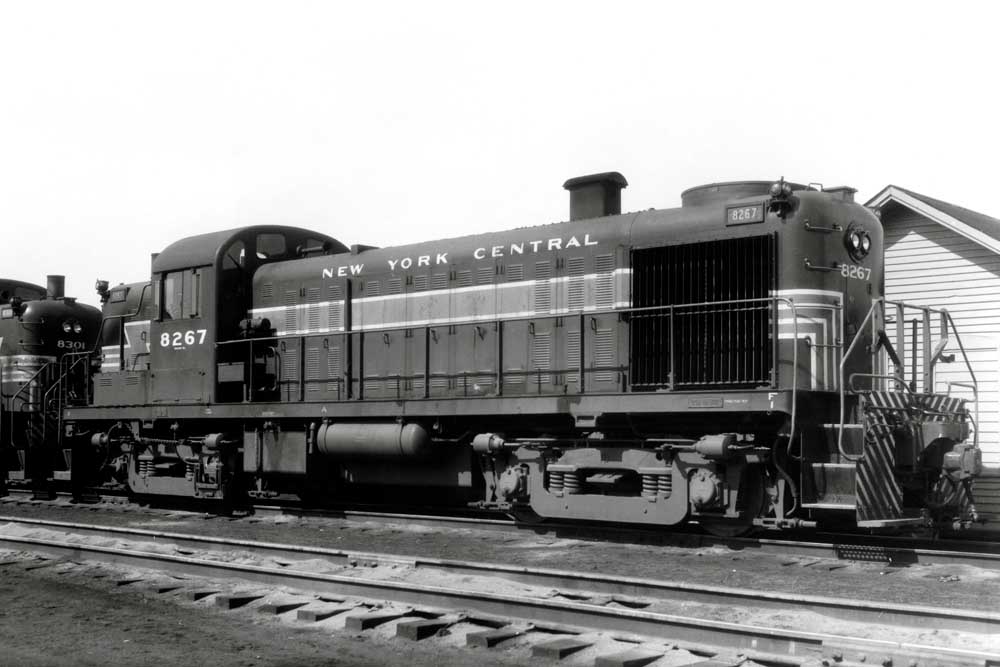
We joined the engineer and fireman on the lead RS3, and after some conversation the engineer suggested we might like to ride the second unit as there were four of us and only three seats in the cab. The fireman escorted us back and admonished us to not touch anything. He also said it would be a good idea if we could remain out of sight when we stopped at Welland, Ontario, since that was still in NYC territory. Once we got on the TH&B, there would be no problem. He said, “Our engineer has enough seniority to outrank anyone who would care.”
The Canada Division of the NYC between Fort Erie and Windsor was a double-track raceway. It was the short cut to Detroit from the east, and it hosted premier trains. Now, 377 wasn’t exactly a premier train, even though it did handle through New York–Toronto sleepers. But no one told this to our engineer; he left Fort Erie like he was piloting the Wolverine. The speed limit was 80 mph, and he exceeded this all the way to Welland.
After departing Welland, we crossed the Niagara, St. Catharines & Toronto interurban line and then made a right turn on to the single-track, Centralized Traffic Control-equipped TH&B main line. The passenger speed limit here was also 80, and again our engineer paid little attention to it. We made stops at Fenwick and Smithville, Ontario. We noticed a big difference in the ride of the RS3’s while on the TH&B. On the NYC, it was merely rough, but on the TH&B it was downright uncomfortable. We were really being thrown around in the cab. Leaving Smithville, the fireman came back to see how we were doing and to give us the plan for Hamilton. Basically, he would come and get us when it was time to get off. There would be an engine change and we would have to go “ride the cushions” back in the train.
As we approached TH&B’s art deco station in Hamilton, I looked ahead and saw the Canadian Pacific power waiting to take us on to Toronto. Instead of the expected pair of FP7s, it was a steam engine. This was a surprise to me, because by now the majority of CP passenger trains in Ontario had been dieselized. We pulled in ahead of schedule, and our Alcos stopped opposite the waiting CP Pacific. We could see our engineer come over to the left side of the diesel’s cab and converse with the outbound engineer.
Shortly, our fireman came back as planned, and we prepared to head back to the coaches. However, he said our engineer was a friend of the CP man and that he had arranged for us to ride the cab of the Pacific the rest of the way into Toronto. What luck! We scampered off the RS3s and climbed into the Pacific’s cab. We made our introductions and grabbed seats.
The all-weather cab was compact, but it did have four seats. After the cab doors were closed, jump seats slid down from the back wall behind the engineer and fireman, and the cab door windows could be lowered so a rider could look out and ahead. I got the seat behind the engineer. The NYC diesels cut off, and we pulled up and backed onto the train. At this point, TH&B train 377 became CPR 326.
Promptly at 11 a.m., the cab communication whistle bleated out two squeaky peeps and we were on our way. Immediately after leaving the station, we ducked into Hunter Street tunnel and picked up speed to about 25 mph. Once clear of the tunnel, the engineer started a conversation with me about how we might get off the engine in Toronto without being obvious about it. He clearly was having second thoughts about the wisdom of having agreed to give us a ride. In 1958, Toronto Union Station was a busy place and there were often officials around. I explained to him that we intended to depart at Sunnyside, the west-side stop just before Union Station. I could sense his feeling of relief. With this settled, I sat back and enjoyed my ride.
After clearing Bayview, the engineer opened up and we were soon cruising at 75 mph. Then, with a little more coaxing of the throttle and adjusting the cut-off, he had her up to about 85. I was impressed by the stability of this heavy Pacific at speed. It rode much better than the RS3s had. We were running on Canadian National track over which CP had trackage rights. Our train was non-stop into Toronto. We skipped Burlington and then went slamming through Oakville, a stop for most trains. It wasn’t until we approached Mimico and CN’s large yard that we reduced speed. Soon we could see PCC streetcars on The Queensway, signaling our approach to Sunnyside. We grabbed our gear and prepared to unload. Our intention had been to get a photo of our engine once we were on the ground, but the train’s immediate departure scotched that plan.
To this day I am not positive of our engine’s number, but I think it might have been the 2469. I do know it was a class G3 built by Montreal Locomotive Works in the 1940s with a recessed headlight, skirted running boards, and wine-red panels accented with gold trim — a handsome machine.
Once in the station, we headed for the men’s room to see what damage the cab ride had done to our clothes, as neither of us had come dressed for a ride on a steam engine. Fortunately, our jackets were unscathed, and after a little touchup at the sink with some soap and wet paper towels, our hands and faces were once again presentable. We stopped at the station’s sandwich shop for a snack, then headed across the street to our first Toronto destination — the Toronto Transit Commission’s Roncesvalles Carhouse. We were aware that the TTC was running rush-hour trippers with Peter Witt cars on King Street, and Roncesvalles was one of two carhouses that supplied cars for King Street.
We had written ahead to get permission to visit TTC facilities, so we walked into the superintendent’s office and explained what we wanted. He politely told us that we needed to go to Russell Carhouse on the east side, as the Peter Witts lived there. Then, almost as an afterthought, he added that there were also some Witts at the St. Clair Carhouse that ran as Bathurst Street trippers. Disappointed, we left and traveled by streetcar to the end of the Dundas car line, which was close to the CP Lambton roundhouse, our second planned stop. Lambton was the terminal for CP’s freight power in Toronto, and the road still regularly used steam on freight there. Nonetheless, Lambton turned out to be another disappointment. The roundhouse held many engines under steam, but we learned that nothing was due in or out for hours. There was some stored power outside. We took some photos of those engines and left.
It was now 1 p.m. on Thanksgiving in Toronto, and we figured we had only another 3½ to 4 hours for photography. However, with our short stay at Lambton, we decided we had enough time to go to the St. Clair Carhouse, which was nearby. So, after another streetcar ride, we got our shots of some Peter Witts. There were just a couple of them in the yard jammed in among a bunch of PCC cars.
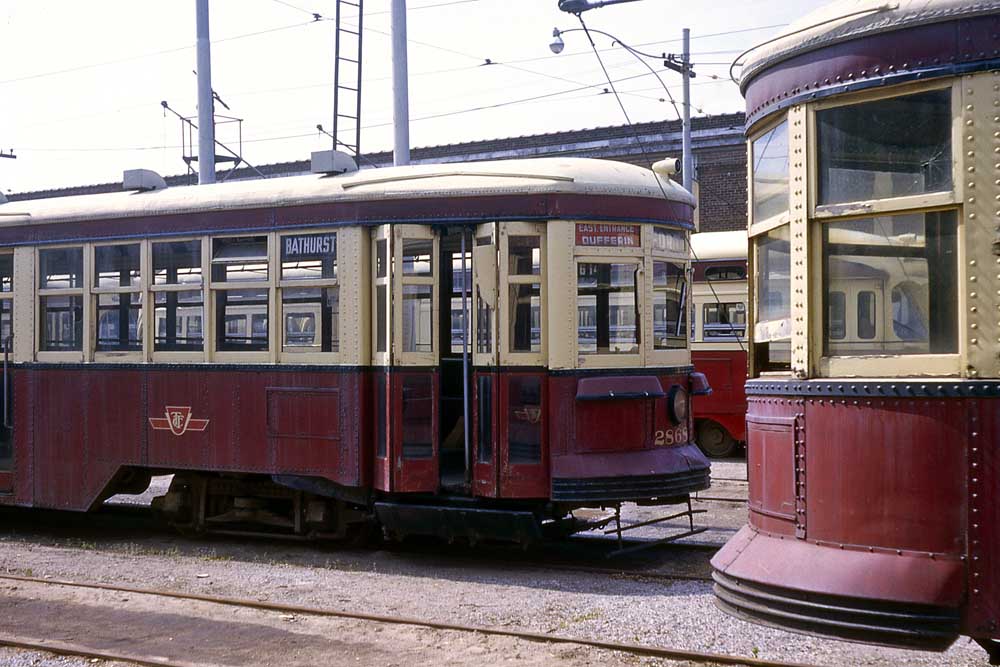
Toronto Roundhouse
Our final move was to head for the Canadian National’s Spadina roundhouse, southwest of Union Station, where CN serviced its passenger power in Toronto. Another streetcar ride brought us to the corner of King and Spadina streets, and we walked south to the roundhouse. It was chock full of steam. We had also written ahead to the CN for permission, and the superintendent invited us to enjoy our visit.
“Just don’t climb on anything,” he said.
We circled the roundhouse interior on the way to the ready tracks outside. There was a lot of power inside, both under steam and cold. Northerns made up the bulk of it, plus some Pacifics and a couple of Mikados and 0-8-0s.
Outside on the ready tracks, locomotives were lined up for afternoon trains, and several were nicely spaced for photography. We got shots of a Northern, one of CN’s elusive Hudsons, and a Pacific. There was also more stored power sitting outside, including several 0-8-0s that until very recently had been used to switch Union Station. We stayed for a while, during which time some engines left and others arrived—including a few brand-new diesels.
By 4:30 p.m. the sun was disappearing, so we walked over to Union Station. We had a date with a 6:45 train, and we wanted a bite to eat beforehand. Later, we again saw the CN Pacific that had been at Spadina. It was standing at the head of an all-stops local to Guelph — really just a commuter train. What surprised us, though, was that the consist was made up of wooden coaches!
Our train ride back was uneventful. We used the tickets we’d purchased at Black Rock to get us back to Hamilton. My dad had told his INS buddies about our trip, so when they got on at Hamilton they squared things with the TH&B crew. Dad met us at Black Rock, and so ended a super day for us.
Back at school on Monday, my classmates were talking about what they had done and eaten for Thanksgiving. I explained that I had gone to Toronto, but since I had gone to see steam, the only turkey I had encountered was painted in NYC lightning stripes!






